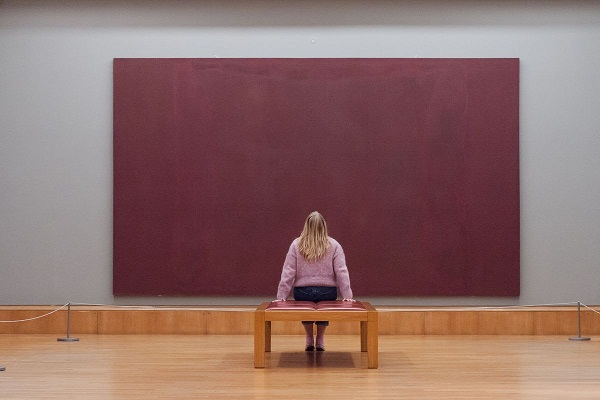The Civil War-era desk, designed in 1876, looked too good to be true. Ornate, fashioned from walnut, maple, and oak, it was created to honor Union infantryman John Bingham.
“When you opened the door, it played Yankee Doodle Dandy,” said Clayton Pennington, a Maine Antique Digest reporter, according to an article in CBC. “It had a piece of a regimental flag on it, Latin sayings, an eagle with a clock on top. I mean, the thing was just absolutely over the top.”
It was also a fake.
Antiques dealer and craftsman Harold Gordon embellished it himself, then forged documents to cement its phony history. He sold it to an art dealer for $84,500. Eventually, the desk ended up in the Wadsworth Atheneum in Hartford, Connecticut, which put it on “prominent display,” according to The New York Times.
The fraud began to unravel when Pennington found a photo of a similar-looking desk, taken from Gordon’s living room. Though it lacked the elaborate detail that made the John Bingham piece so unique, structurally, the two were identical. “It’s the apotheosis of my own making,” Gordon later admitted to the Times. “I lied. I cheated. I stole.”
Gordon was ordered to pay back the $84,500 he received for the desk, but he got out of prison time due to his declining health.
The situation is far from unique. While art crime is the third-highest-grossing criminal enterprise behind drugs and weapons, according to the Department of Justice, charging fraudsters can be tricky. Prosecutors need to show that the grifter meant to pass off a fake piece as legitimate. “It’s okay to make a copy of a work of art, but it’s not okay to sell that copy and identify it as an original,” says Jo Backer Laird of Patterson Belknap, who specializes in art law.
As the price of art has skyrocketed, the incentives for forgeries have soared, reported The Guardian. In 1985, the J. Paul Getty Museum set a record for the highest auction price paid for a painting when it bought Andrea Mantegna’s Adoration of the Magi for $10.4 million. In 2017, a painting thought to be by Leonardo da Vinci sold at Christie’s for $450 million.
But money isn’t always the goal. Mark Landis, a famous art forger who persuaded museums across the United States to take and display his work, gave fake art as a “gift.” When the works were revealed to be forgeries, the museums had little recourse since they hadn’t purchased the pieces.
“The difficulty is that, however annoying and disruptive Landis’s activities may be for museums, he does not seem to have broken the law,” reported the Financial Times. Landis was not charged.
There’s something about these laws and light sentences that feels out of place in a country famous for over-incarceration. Landis’ motives might be opaque, but his deception had real consequences for the museums displaying his work. The situation speaks to an unequal justice system that treats crimes associated with the white and well-off with surprising leniency, given the money involved.
Some forgeries aren’t discovered until well after the fraudster’s lifetime. One chest of drawers, purchased in 1929 by Henry Francis du Pont, was thought to be an authentic antique until experts began examining its provenance and couldn’t trace it back past a few prior owners. “There was absolutely no written evidence,” says Linda Eaton, a curator at Winterthur Museum. “We had to rely on the construction details to figure out that it was a bunch of hooey.”
Upon close examination, the chest was revealed to have been reworked to look older than it was. Joseph Downs, the first curator at Winterthur, had doubts about the piece but was reluctant to voice them to du Pont. “It’s kind of hard to go to a collector who’s paid an absolute fortune and say ‘it’s fake,’” says Eaton.
Now, Winterthur displays the desk as part of a show on detecting fakes in the art world. “It is important for us all to have open and enquiring minds because many, if not most, public and private collections contain fakes,” the museum says. “Some are recognized, but others have yet to be discovered.”
